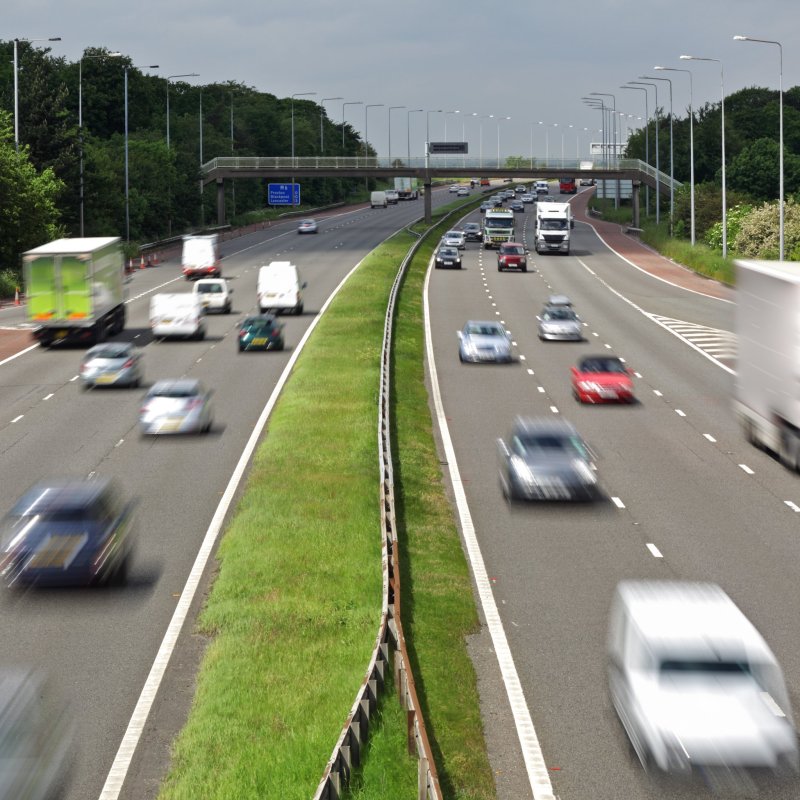
Although you can tour England extensively by rail, sometimes renting a car in the United Kingdom’s largest country is the best way to explore to out-of-way villages, historic sites, and verdant countryside. Here are some useful things to know about car rental or “car hire” as it is called in England.
Videos by TravelAwaits

1. Age Restrictions
Minimum rental ages vary by company and range from 17 to 25. Surcharges for drivers under 25 years of age can be hefty.
Rules regarding older drivers also vary from company to company. The rules are usually driven by what insurance provider they use. Maximum age limits, when they are present, vary from 70 to 80. Even when no maximum age limit exists, extra charges may apply or insurance clearance may be required prior to renting. In some cases, that may involve providing a doctor’s certificate.
If you are a younger or older driver, find out the requirements before you make rental arrangements, and be prepared to shop around.
2. Left Of Center
In the United Kingdom, vehicles drive on the left side of the road. This can be disorienting if you are used to driving on the right.
The first difference is in the car itself. The driver’s seat is on the right-hand side, which means you shift with your left hand instead of your right. However, the clutch, gas, and brake pedals are in the same positions you’re used to. As you should do for all rental cars, familiarize yourself with the position of all buttons and controls before driving.
Once you’re on the road, take it slow while you adjust. You may instinctively look the wrong way for oncoming traffic. Beware of that bias and make a point of looking both ways. Also, be careful of overcompensating and veering too far to the left.
Driving on the “opposite” side of the road can be as disorienting for passengers as for drivers. I initially thought my husband was drifting over to the left, but when I checked lane lines on the road I realized he was within his lane and where he should be.
3. Transmission Type
The default for most car rentals in the United Kingdom is standard transmission. Automatic transmissions are available, but be prepared to pay significantly more for an automatic vehicle. If you are not used to driving a standard transmission, the cost may be worth it to avoid additional stress.
4. Filling Up
Rental cars may be fueled by petrol (what North Americans call “gasoline”) or diesel. Find out which one your rental car uses so you select the correct pump when you refuel. Putting the wrong type of fuel in the tank can cause damage that you may be liable for. Almost every UK petrol station is self-serve, so make sure to pay attention. Note that petrol and diesel in the UK are sold by the liter rather than the gallon.

5. Roundabouts
Roundabouts, circular intersections in which traffic flows around a central island, are commonplace and provide an excellent means of keeping traffic moving, but they can be challenging to drivers not used to them. There are a few basic guidelines for navigating roundabouts.
Signs as you approach the roundabout show the position of exits/roads fanning out from the intersection so you can plan where you want to exit before you enter. As you approach, yield to traffic already in the roundabout. It has the right-of-way. Enter the roundabout when it is clear to do so, turning to the left. Roundabouts in busy areas may have traffic lights controlling entry. Traffic moves in a clockwise direction through the roundabout.
If you are taking the first roundabout exit to the left, stay in the left lane and signal left. If you are taking an exit to the right or going full circle, signal right and enter the roundabout in the right-hand lane. Keep to the right until you need to change lanes to exit and signal left after you have passed the exit before the one you want to take.
When there are several lanes at the entrance to a roundabout, use the most appropriate lane on approach. Sometimes markings on the road identify lanes based which on road you’re taking.
Your satisfaction and relief after successfully navigating your first roundabout may quickly dissolve to frustration when confronted with a second roundabout almost immediately. However, it doesn’t take long to become accustomed to these intersections. Although there have been a few times we’ve circled through roundabouts until we were certain of our exit, we generally found the directions to be quite clear. As you become used to them, you appreciate the role they play in keeping traffic moving.
Read the UK Highway Code for complete rules on navigating roundabouts.
6. Variable Motorway Speeds
Variable speed limits apply to some motorways, expressways designed for fast travel and long distances. Speed limits and distances in England are shown in miles. (The speed limit for cars on motorways is generally 70 miles per hour.) At certain times of the day, lower speed limits may be in effect to prevent start-stop congestion.
Studies have shown that slowing everyone down in high traffic situations results in traffic flowing more smoothly and quickly. Overhead digital signs notify you when the variable speed limit is in effect and what that speed is. Please observe the revised limit. There are speed cameras capturing images of speeders’ license plates.
7. Narrow Roads
Apart from the motorways and major arteries, some roads will seem narrow by North American standards. Still, two-way traffic only becomes an issue when you’re on one of the single-track or one-land roads in rural areas. There are a few things you should know before driving on such extremely narrow roads.
First, take it slow. Second, pay attention when you pass a widening in the road or a pullout/turnout. Be prepared to back up to those spots when a car approaches from the other direction.
Similarly, if a car behind you seems to be in a hurry, pull into the first widening you come across and allow it to go on ahead.
Third, approach every curve in the road, especially ones where trees block your vision of what’s around the bend, as if another car is definitely approaching.
Fourth, enjoy the scenery! You can plan your trip to avoid narrow roads, but they are often picturesque, and will lead you to quaint villages with welcoming pubs and inns.

8. Why Is That Other Car Flashing Its Headlights At Me?
Officially, the UKHighway Code states: “Only flash your headlights to let other road users know that you are there. Do not flash your headlights to convey any other message or intimidate other road users.” However, you may encounter unofficial headlight flashing as a way of saying “go ahead” or “thank you.”
At unmarked crossroads or t-junctions, another driver may flash their headlights to indicate that you should proceed first. Make sure that is the true intent of the flashing and that it is safe to proceed before doing so. In situations where you’ve allowed another car to go first, that driver may flash headlights as a “thank you.”
9. Insurance
As is the case in many other countries, car rental insurance in England can cost more than the basic cost of the car itself. The insurance terminology used may be unfamiliar to you.
Third party Cover (TPC), also known as Third Party Liability Insurance, is a legal requirement and is generally included in the baseline car rental. This covers accident-related damage to anyone or anything outside the car. Other insurance coverages relate to damages to the rental car itself.
Vehicle Damage Cover covers the cost of damages to the rental vehicle. Sometimes this is included in the car rental package. Note, however, that there may be exclusions, such as tires and windshields. Note also that there remains a fixed amount the renter must pay toward the repairs. This amount, more commonly referred to as a deductible in North America, is known as the Excess or Collision Damage Waiver (CDW) and can range from £1,000 to £2,000. Additional insurance coverages, such as Super Collision Damage Waiver (SCDW) or Excess Cover, can be purchased to reduce the excess amount.
Vehicle Theft Cover, or Theft Protection, is another available optional insurance to cover the cost of replacing the car or parts of it in the event of theft.
No matter which coverages you purchase, you will usually not be covered for damage caused by breaching the rental agreement, negligence, or using the wrong fuel.
If your credit card offers car rental insurance, check with your card issuer to confirm they provide coverage in the UK, what they cover and under what conditions. Typically, you need to decline the rental company CDW in order to use credit card coverage and that may be difficult if the CDW is bundled into the rental price. If you find navigating the insurance options overwhelming, enlist the help of a travel agent.
10. No Left Turn On Red, No Cell Phones
Left turns on red lights are prohibited. Some intersections have separate left-turn lights.
Not only do traffic lights turn amber when they switch from green to red, they turn amber before switching from red to green. That is a signal to be ready to move, but you mustn’t start moving until the light is green.
Seat belts are mandatory.
It is also illegal to use a handheld phone or similar device while driving, including when stopped at lights or queuing in traffic. For a complete list of driving rules, read the UK Highway Code.
11. Driving In London
Don’t drive in London if you can avoid it. London traffic can be busy and chaotic, plus it costs £11.50 to drive weekdays in the Congestion Zone Area in central London. Public transportation via subway, buses, and above-ground trains is excellent. Taxis are plentiful. Save your car rental money for when you explore the scenic back roads, rolling hills, and picturesque villages of the countryside.
